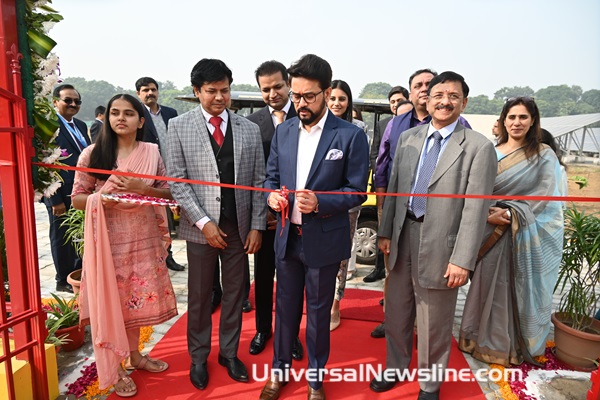Extreme weather conditions, Ukraine and Israel-Hamas crisis, decrease in workforce travel due to global geo-political disruptions are among the major factors that could drastically impact employee wellbeing leading to Burnout that will have a significant impact on Businesses.
The global perma-crisis is set to continue to take its toll in 2024, as extreme weather events continue to impact organisations and global instability deepens. This situation is giving rise to concerning levels of employee burnout. According to the latest International SOS Risk Outlook Report 2024, 80% of surveyed global senior risk professionals predict burnout will have a significant impact on businesses in the next year[1]. But only 41% of them feel that their organisations are equipped to deal with it.
It also provides a detailed view of some of the major risks which organisations must address in 2024 including the climate crisis, the power of AI, the evolution of employees’ expectations and worldwide unrest.
Udit Mehta, Executive Vice President and Director of Operations for International SOS comments "2024 will likely be a year that redefines a crises conundrum, with multiple risks driven by instability causing a considerable impact and consistent insecurity that organizations need to address. This coupled with the crisis management functions being continually challenged for a fourth year running since the outbreak of the COVID-19 pandemic implies organizations would need to re-assess not just the resourcing of this critical function but also its placement in management structures.”
Mehta adds, “Concurrent to the survey forecasting an increase in risks faced by organizations in 2024, organizations would need to ensure proactive principles of mitigation are implemented in conjunction with instituting pre-emptive intelligence and analysis capacities. Organizations would also need to ensure partnerships with experts to understand their mobility and location linked exposure while juxtaposing the same with geo-political, geographical and industry-specific risk accrual. A forward leaning approach to address the challenges brought by this era of perma-crisis including expansion and evolution of the crisis and risk functions is critical for organizations to ensure endurance and resilience in the course of fulfilling growth objectives amidst the prevailing volatility.”
The International SOS Risk Outlook Report 2024: The Top 5 Predictions
Running on Empty – The Perma-Crisis Takes its Toll
In recent years, as the disruptions caused by the COVID pandemic began to subside, the emergence of the Ukraine/Russia conflict unleashed new waves of supply chain and service disruptions across various industries. With these ongoing stressors accumulating without respite, the risk of employee burnout is becoming increasingly tangible. The report’s findings noted that organisations have experienced a noticeable surge in stress-related absences. Surveyed respondents emphasise that the perceived risk level for the next 12 months is the highest ever recorded – 65% believe that global risks will continue to grow in 2024 – compounding their crisis management fatigue beyond pre-pandemic levels.
Climate Crisis – Climate Change Comes Home
Over the last 2,000 years, global temperatures have increased faster in the last half century than any other similar period, highlighting how relevant climate risk is now for businesses across the world[1]. One in four organisations reported that they have already seen their operations affected by events attributed to climate change, and this year the second biggest category out of the thousands of alerts issued by International SOS in 2023 was extreme weather events.
This comes as only half of respondents say they have factored climate change into their health and security plans, emphasising how vulnerable many organisations could be. This issue is certainly not going away, as approximately three-quarters of businesses report extreme weather as a challenge to their employees and operations in the coming year.
The continued impact of climate change on human health and wellbeing is now being acutely felt across the world. Dr Vikram Vora, Medical Director – Indian subcontinent comments, “The past few years have seen a rapid and unpredictable rise in unfavourable climate events like heat waves, floods, cyclones and earthquakes, which affect the physical and psychosocial health of the workforce”. The recent floods in Chennai due to the severe cyclone Michaung are an example of the devastation and disruption extreme weather events will continue to cause in the foreseeable future.
The impact of air pollution (as is being witnessed across India and other subcontinent countries), post-flood vector-borne diseases, potable water scarcity and challenges in accessing healthcare, compounds the risk to organizational resilience.
It is now imperative that all current and future organisational climate action planning includes employee health and wellbeing as a key driver of sustainable business operations.
Global Instability Deepens
The second-highest security concern identified by respondents in this year's survey revolves around geopolitical tensions. As a striking three out of four respondents expressed the belief that their organisations will face significant impacts in the coming year. Notably, the ongoing crisis in Israel and Gaza, as well as the persistent conflict in Ukraine, contribute to this unstable global environment. Civil and social unrest, coupled with political instability, rank as the next largest worries for organisations. The unpredictable nature of these events highlights the need for businesses to adopt robust security measures, proactively navigating the challenges arising from the dynamic global geopolitical landscape.
AI – Risks and Opportunities
AI has inspiring potential to create a new industrial revolution. However, for now, it further complicates the vital task of sorting reliable information from misinformation and deliberate disinformation for businesses. More than two out of five respondents of the Risk Outlook research said they were worried about the effect of medical misinformation and disinformation on their workforces. This rises to three in five when asked about inaccurate political information – a potentially difficult situation as the United States heads into a highly consequential election year.
The New Employment Contract
Three-quarters of surveyed organisations report increased employee expectations for Duty of Care. A similar number are now also shouldering duties previously seen as government responsibilities, including two-thirds who acknowledge extending responsibilities to support workers' families in times of need. This underlines how the era of offering only basic occupational health services for work-related conditions is over. While still essential, occupational health provisions must be enhanced with diverse support and interventions to safeguard and nurture employees globally.








